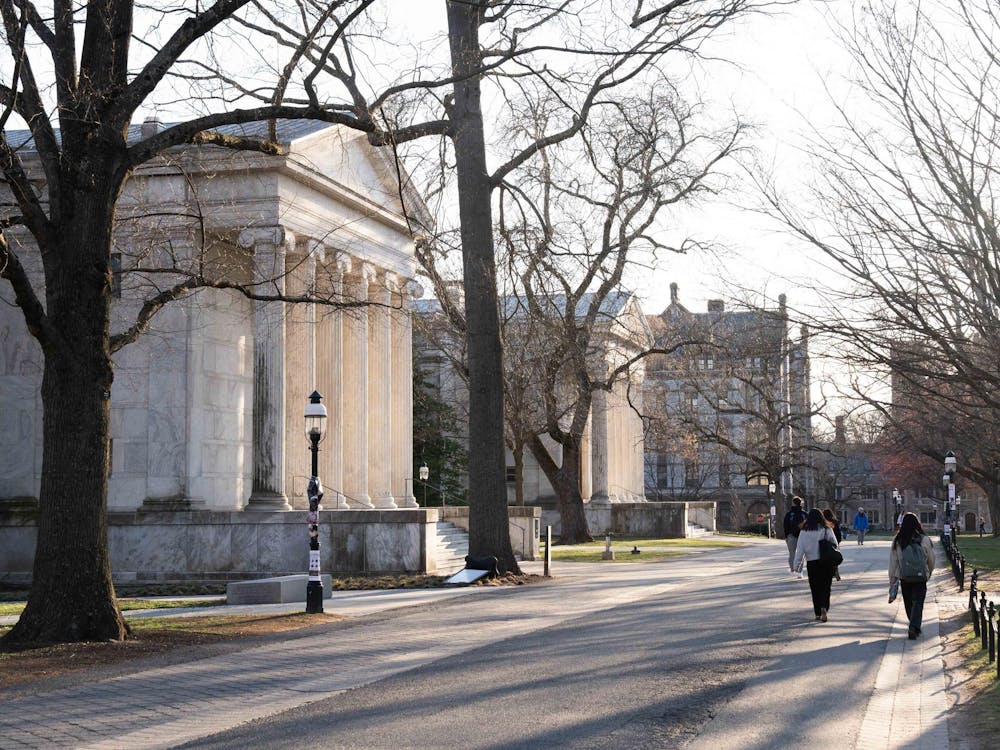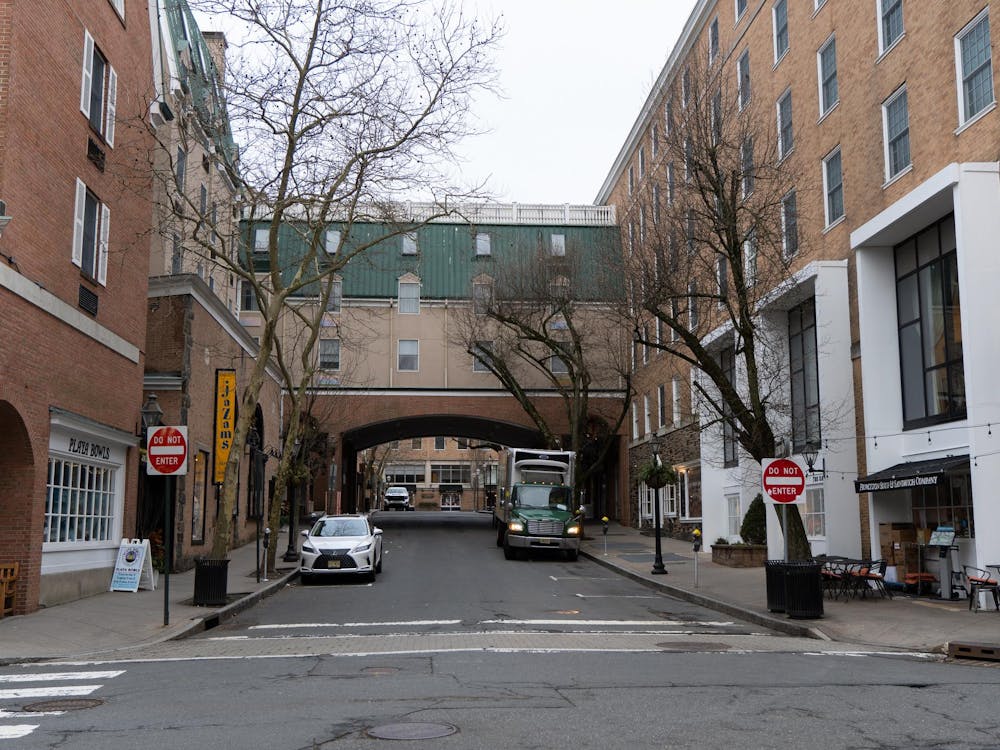Female student-athletes from the University have gone on to win Olympic medals, NCAA championships and multiple Ivy League titles.
However, they faced significant challenges such as lack of funding and support as they tried to establish University teams.
Early athletics
Students at the University's "sister college," Evelyn College, were required to exercise outdoors for at least an hour every day in the late 1800s, according to the book "Transforming the Tiger" by Catherine Keyser ’01. Gymnastic exercises were mandatory and students could also elect to play on the tennis and softball teams.
In the early years of coeducation, Marsha Levy-Warren ’73 said that women had no physical education requirement due to a lack of facilities and equipment.
“So the women who were doing sports were doing it just because they wanted to,” Margery Hite ’74 said.
Elizabeth English ’75 said she recalled wanting to compete on Wilson College’s intramural hockey team as a sophomore but was told she could not play due to her gender.
“They said I couldn’t play, ‘Because somebody is going to smash you into the board and do damage to your reproductive organs,' " she said. "And I said you’ve got to be joking because the guys’ reproductive organs are much more vulnerable than mine. But they didn’t think that that was very funny."

She said she was later sent to the infirmary so that a doctor could render her unfit to play.
Sue Perles ’75 said the University was not prepared to deal with the athletic demand for women’s teams because it did not know what to expect.
“They had developed a five-year plan in the athletics department for getting women from [physical education] classes to club teams and then to varsity teams, and that five-year plan got collapsed into about a five day plan,” she said.
The locker system at the University was not very efficient until a few women came together in the nineties and made a plea for new lockers, said Peter Farrell, who has been the head coach of the women’s cross country and track and field teams since they were founded in 1978. Before the plea resulted in women’s locker rooms that mirrored the men’s locker rooms, the women's lockers were located in Dillon Gymnasium, which was far from Jadwin Gymnasium and the outdoor tracks where they trained.

The first sets of uniforms
The first uniforms for the women’s field hockey team were “begged and borrowed” from other parts of the University like the cheering squad, Perles said.
The women’s track and field and cross-country teams had $5 t-shirts with tigers on the front and back that were bought from the U-Store for their first uniforms, Farrell said.The women on the teams are now given Nike-funded merchandise worth $800 upon arrival into the University, he added.
Marjory Smith ’73 said that Eve Kraft, founding head coach of the women’s tennis team, bought the team ankle-length socks with orange pom-poms to wear to matches.
The women’s hockey team was initially given a dozen hockey sticks among other old equipment and two hours of ice time a week at 1 a.m., which was later than anyone was interested in using the ice, English said.
“We borrowed the smelly, old discarded equipment from the boys until we could build up our own,” she said.
The team funded itself through University funds and donations from parents and classmates, she added.
“They made us wear these plastic boobs," she said. "We had to wear chest protectors so we wouldn’t all 'get breast cancer from being smashed into the boards.' And they were one size fits all, which you know, hardly fits anybody."
The hockey team had its first game at the end of the year, English said,and members of the team staged a fight and piled up in the middle of the ice during the inter-squad match.
“We were acknowledged as a varsity team in the making, but we had to show that we deserved to be a varsity team,” she said.
The Elizabeth English Trophy is now presented annually to the member of the women's hockey team who is voted by her teammates to be the most valuable player.
“It’s pretty funny, here I am, a career academic and I’m remembered at Princeton for being a jock," she said. "But I’m enormously proud that they set up an MVP and named it after me, and I can brag that my name is in the University’s graduation program every year."
A Historic Tennis Match
Smith knew there would not be a women's tennis team when she arrived at the University and that she would help to start it, she said, noting most of the players on the tennis team in its first year did not have any tournament experience beyond playing on the club level.
She often practiced tennis with the men, who had equal time on the courts with the women, Smith said. She added that the tennis courts were located in front of the hill where Whitman College is nowlocated, and that the hill would be "covered" with people watching both the men and the women play.
Smith played Jeffrey Lewis-Oakes ’75, the top-ranked men’s junior-varsity player in a takeoff on the famous 1973 “Battle of the Sexes” tennis match between Billie Jean King and Bobby Riggs.
“I don’t remember being crushed that I lost or anything," she said. "It’s more like it was just a fun event and it brought out a lot of people and it was a good time."
The women's tennis team did not lose a single match in the five years following its establishment in 1971.
Recruiting potential athletes
Farrell said that there were initiallysignificantly fewer women who practiced and competed in track and field and cross-country in high school than there are now.
The experiences of the women on the teams in the 1980s were very different from the women on the teams now, he added, noting the team’s first spring trip involved driving 22 women down to Athens, Ga., in a van. Now, 36 women are flown to Orlando.
“When I first started out, these people had to prove themselves, and these people had to earn the right and they had to establish the women’s program as a viable, serious option,” he said.
Farrell said he had to adapt his coaching strategy to leading a women's team.
“I knew that women aren’t made to endure all the training that men are made to endure," he said. "I knew that only some women could endure 90 miles a week but almost all the men run 80 to 90 miles a week."
Farrell said that while recruiting, it is necessary totrack the best athletes possible and "sell the University" to them.
“For some reason, when you get a kid who has done their homework and is open to taking risks and just really genuine, I’m just like, 'Oh my God, this is such a Princeton kid,' ” Susan Teeter, head coach of women's swimming and diving, said.
While recruiting, the University makes it clear that balancing athletic and academic demands will not be easy,Kristen Holmes-Winn, head coach of the women's field hockey team, said.
“We always attract student athletes who love the challenge, have very diverse interests," she said. "They're not just students and they’re not just athletes. They have interests beyond sports and academics, whether it be that they’re into music or the arts."
The most disappointing part of recruiting is losing someone who would be a great fit for the University as a whole, Courtney Banghart, head coach of the women's basketball team, said.
“I am extremely happy and fortunate that I never had scholarships to deal with and that I got to coach wonderful athletes —incredible athletes —without having that scholarship hanging over their heads,” Farrell said.
Representing the University
CarolineLind ’06said it was surreal to represent the University at an international level and become the first Princeton rower to ever win multiple Olympic gold medals.
“I just hope that my experiences can help Princeton and can help the women that come after me, you know, to inspire them as well,” she said.
Smith said she had the opportunity to play at the U.S. Open during her time at the University.
“I always felt like I represented Princeton, and I was always very proud to be doing that,” she said.
This article is the third in a four-part Women’s History Month feature series. Check back tomorrow for a look at women and extracurriculars at the University.







